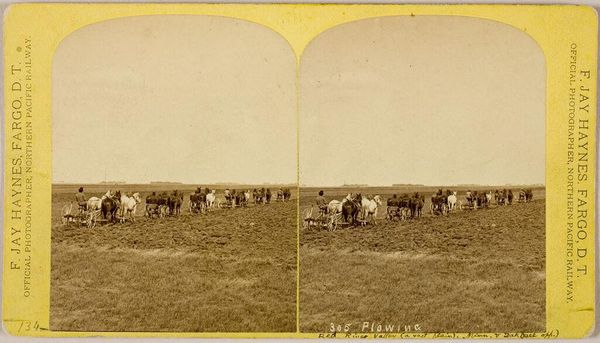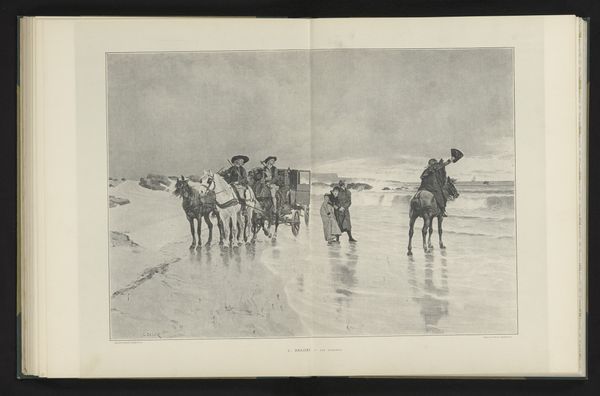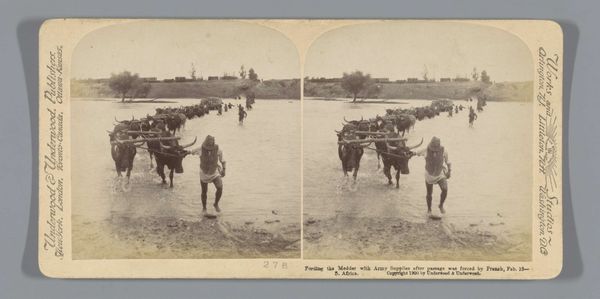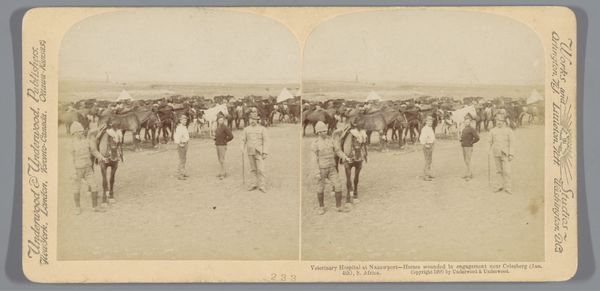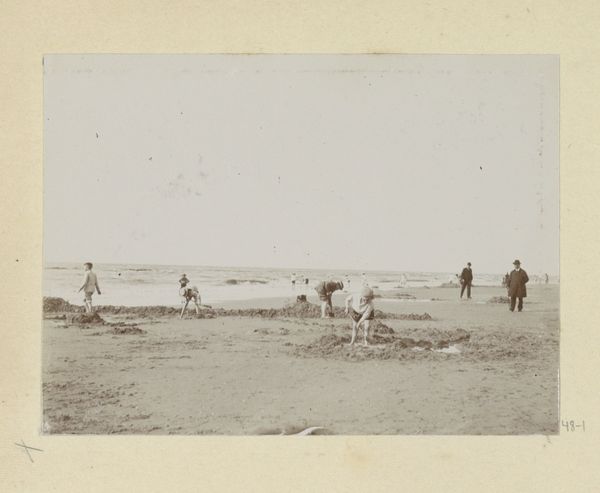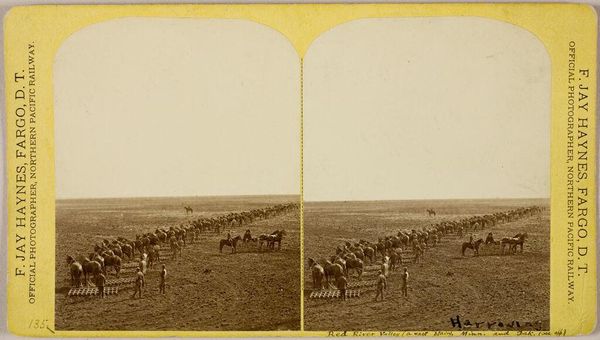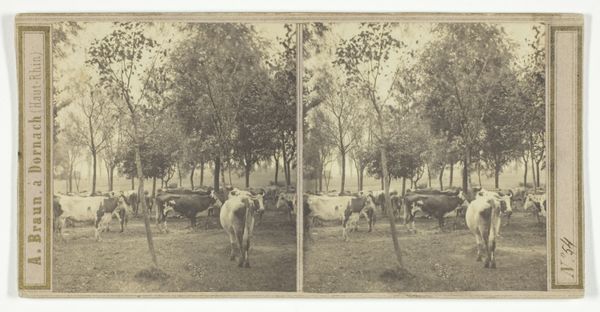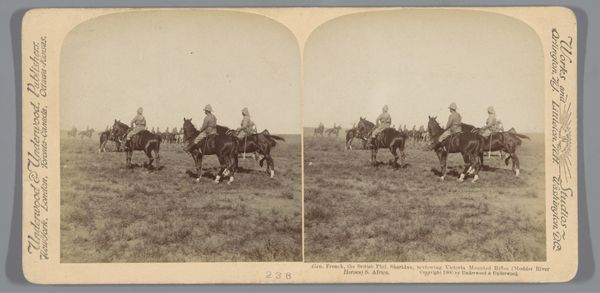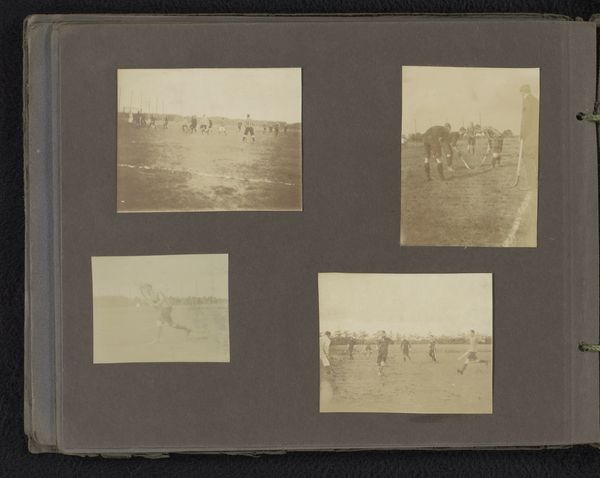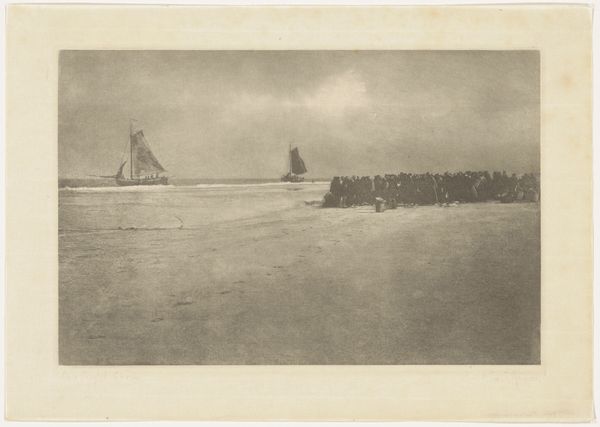
photography, gelatin-silver-print
#
landscape
#
street-photography
#
photography
#
orientalism
#
gelatin-silver-print
Dimensions: height 89 mm, width 175 mm
Copyright: Rijks Museum: Open Domain
Editor: This is a fascinating gelatin-silver print titled "Caravan with Camels on the Beach at Jaffa, Israel," taken around 1905. There’s almost a sense of timelessness about the photograph, with the camels standing still as a ship is coming, yet at the same time, the picture evokes colonialism, doesn’t it? How would you interpret this piece in its historical context? Curator: Indeed, the image presents a compelling narrative when viewed through the lens of its time. The presence of both the camels and the steamships highlights a tension between tradition and modernity. What role do you think this "orientalist" genre, in which westerners are interested in near-east themes and representation, plays in how viewers interpret this scene? Editor: I hadn’t quite thought of it that way. Seeing this moment frozen, especially with the backdrop of early 20th-century colonial dynamics, brings up a lot. It makes you wonder who the image was for, and what purpose it was meant to serve. Curator: Exactly! Stereoscopic photographs such as this one, printed en masse in Europe, fulfilled a need to disseminate and also promote ideologies related to orientalism, exoticism, and exploration. By considering the politics of imagery we might understand how spaces are represented, especially regarding Western views towards colonized lands. Editor: So it's not just a picture of camels on a beach, but a reflection of power structures. Is that right? Curator: Precisely. These images circulated within a network of colonial representation, which significantly shaped the perception of Palestine. In fact, it can almost be compared with contemporary colonialist photography, where stereotypical themes continue to influence opinions on that part of the world. Editor: I hadn't considered how much a seemingly simple scene could contain so much socio-political information. Thank you for enlightening me with the context. Curator: And thank you for posing such thoughtful questions; it reminds us that art isn't created in a vacuum. Examining who creates images and for whom are always crucial to the interpretation.
Comments
No comments
Be the first to comment and join the conversation on the ultimate creative platform.
